#20. Zorse
Is it a zebra or a horse? Well, neither of them… It’s a zorse! This equine is the offspring of a zebra stallion and a pony mare. English naturalist, geologist and biologist Charles Darwin, widely known for contributing to the science of evolution, was the first person to breed zorses. Zorses are exceptionally rare because they are sterile. This same problem occurs in other hybrid species.

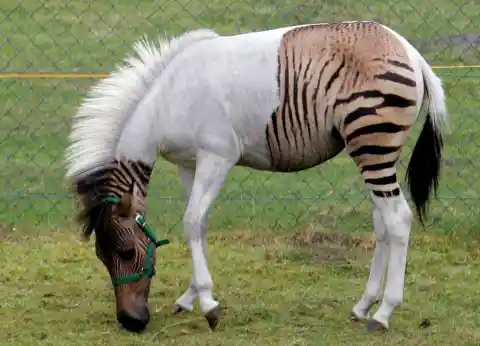
Don’t confuse zorzes with zonies, which are the offspring of a zebra stallion and a pony mare. To produce riding zonies, medium-sized pony mares are chosen, but zebras have been crossed with smaller pony breeds such as the Shetland, which has resulted in “zetlands“. A zetland was naturally born at Eden Ostrich World in England after a zebra was left in a field with a Shetland pony. It’s curious how many animals zebras have been crossed with!
#19. Wholphin
You may also find this amazing creature by the name wolphin. It is a rare mix between a false killer whale and a bottlenose dolphin. Unlike other hybrids, they mate naturally and exist in the wild but there you can also find these hybrids in captivity, like Kekaimalu, whose name means “from the peaceful ocean,” and her calf, Kawili Kai, who lives at the Sea Life Park in Hawaii.


Keikaimalu is the world’s first known surviving wholphin and a perfect 50-50 hybrid of both species. She was born in captivity at the park in 1985 when I’anui Kahei, a male false killer whale, and Punahele, a female Atlantic bottlenose dolphin, who were sharing an aquatic pen, mated. Apart from Kawili Kai, Keikamalu has given birth to two other offspring. The first one was born when Keikamalu was young and died a few days after birth. The second one lived for nine years.
#18. Beefalo
Beefalo are a fertile crossbreed resulting from mixing domestic cattle and American buffaloes. The first record of this hybrid, which was the result of an accident, is from 1749 in the southern English colonies of North America. Intentional crossing started in the mid-19th century to help with the beef production industry and with the hope that animals could survive the harsh winters.
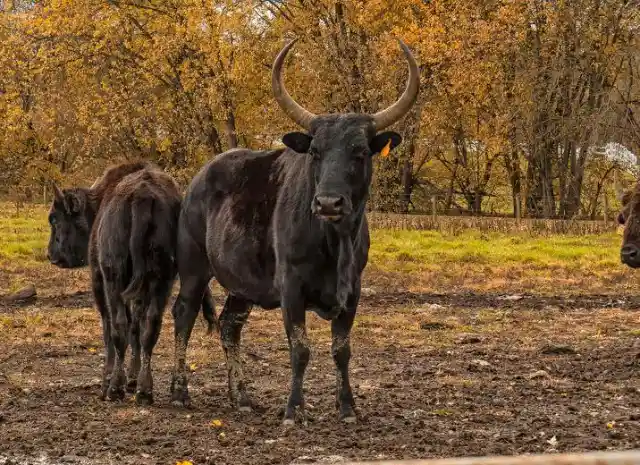
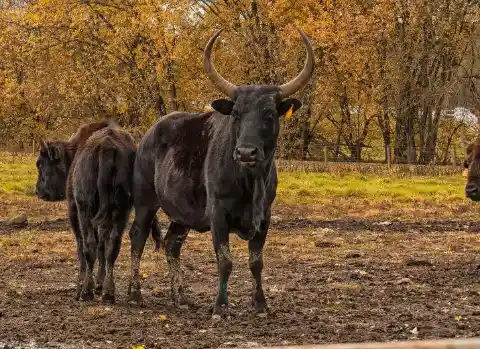
Naturalist Ernest Thompson Seton described:
“The hybrid animal is [claimed]to be a great improvement on both of its progenitors, as it is more docile and a better milker than the Buffalo, but retains its hardihood, while the robe is finer, darker and more even, and the general shape of the animal is improved by the reduction of the hump and increased proportion of the hind-quarters.”
#17. Liger
This gorgeous cross is born when a male lion a female tiger mate. Don’t confuse it with its counterpart, the tigon. Typically, ligers enjoy swimming, like tigers, and are very sociable, like lions, and they grow bigger than lions and tigers. If you’ve watched the classic film Napoleon Dynamite, you probably know that this crossbreed is Napoleon’s favorite animal. No wonder why!
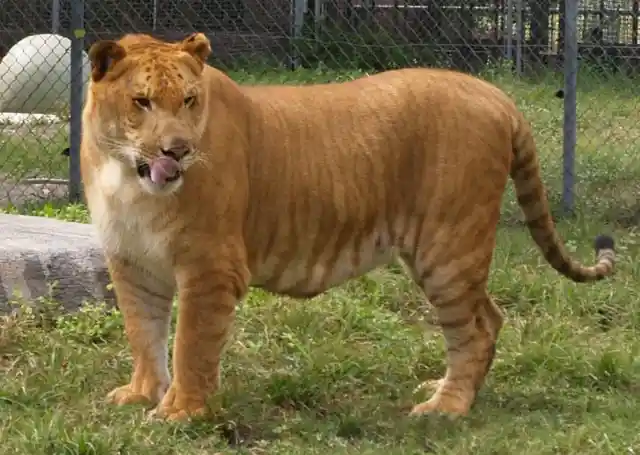
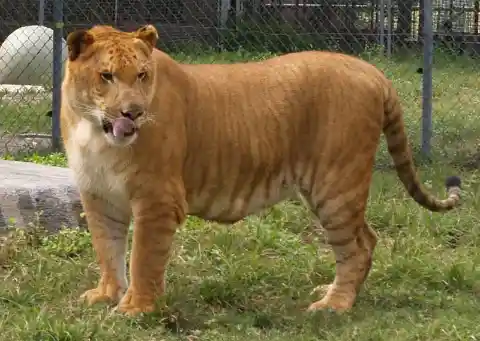
There’s a famous scene in the indie film where Deb asks Napoleon “what are you drawing?”, To which he replies “a liger.” She then asks “what’s a liger?”
“It’s pretty much my favorite animal. It’s like a lion and a tiger mixed… bred for its skills in magic,” Napoleon replied.
Can you guess #16?
#16. Grolar bear
What do you get when you cross a grizzly bear and a polar bear? You guessed right, a grolar bear. This is a rare ursid hybrid that has been seen both in captivity and in the wild. Naturally, polar bears and grizzly bears tend to avoid each other, as the former tend to live on sea ice whereas the latter have a terrestrial lifestyle. Regarding their physical traits, they are usually an intermediate between the polar bear and the grizzly bear.
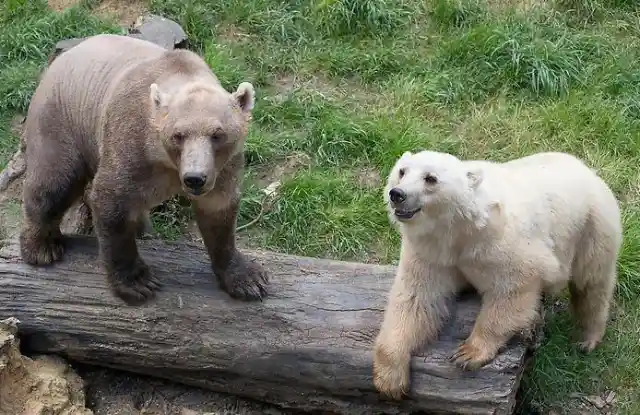
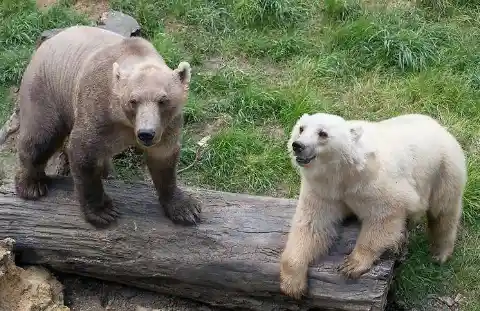
At first, grolar bears were thought to occur only in captivity but, since 2006, sightings of this breed have been spotted in nature. It was rare for grizzly bears to stray far north of the coast of mainland Canada, but since 1991, they have been extending their range towards the Canadian Arctic Archipelago. Between 2003 and 2008, seven hybrids were spotted in Canada’s Wapusk National Park south of Churchill, Manitoba.
#15. Zonkey
Remember the zorse? Well, the zonkey is its cousin. The zonkey is the cross between a zebra and a donkey. The main characteristic of zonkeys is that they look like donkeys from the torso up, but their legs scream zebra. Zonkeys are also known as zebonkey, zebronkey, zebrinny, zebrula, zebrass, zedonk, and zebadonk. They may have a lot of different names but no matter how we call them, they are all cute and funny-looking!

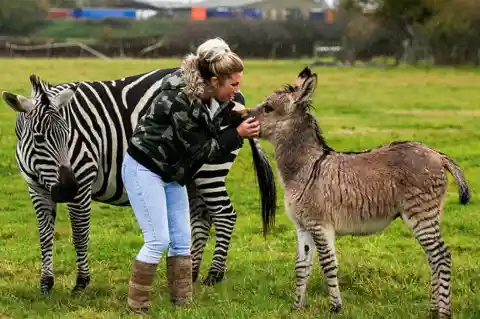
In South Africa, zonkeys are born in places where zebras and donkeys are found in proximity to each other. Still, just like zorses, zonkeys are a rare breed as they are also unable to breed. And by the way, if you happen to visit Tijuana, Mexico, you should know that donkeys are painted as zebras for tourists to pose with them in souvenir photos. So think it twice before paying for this souvenir!
#14. Dzo
The dzo, also termed zo, zho and dzho, is a hybrid bovid created via crossbreeding the yak and domestic cattle. To be more technical, dzo is the male hybrid whereas the dzomo (or zhom) is the female cross. Originally, they appeared in Mongolia and Tibet, and nowadays they can be seen on the pastures in the mountains in these areas. However, their popularity is on the rise in other Asian countries as well.
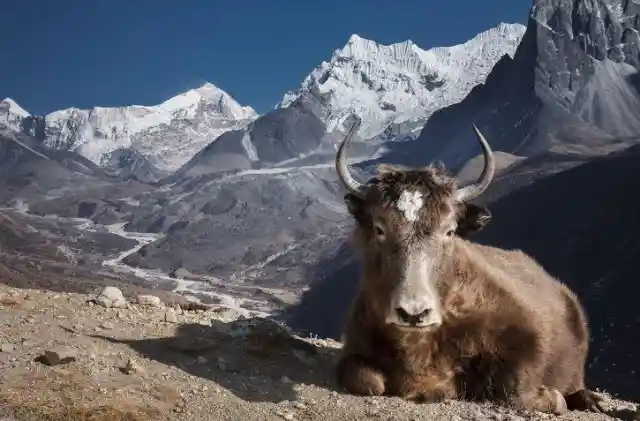
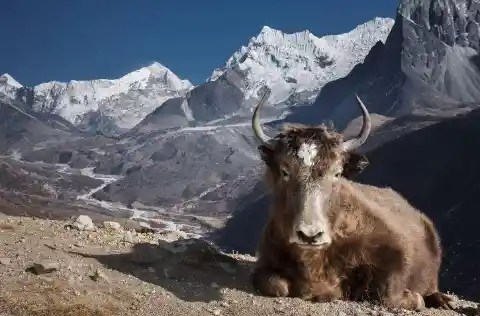
Covered with a long, shaggy coat in white, brown and black shades, dzos tend to be stronger and bigger than both of its parents. As a result, local farmers and producers use dzos to carry hefty loads across mountain passes and to support tracking and hiking expeditions to Mount Everest. Another great advantage is that they are able to find its way easily across the tough mountain terrains even with a low percentage of oxygen in the air.
#13. Savannah cat
Being a hybrid of a serval (a medium-sized, large-eared wild African cat) and a domestic cat, savannah cats are described as being loyal and smart and they can be trained to walk on a leash and to fetch. They also like to play in the water. Because of this, some people compare this cat breed with dogs, but they’re definitely very different from each other: anyone who wishes to get one of these cats must take special precautions to prevent the cat from getting into trouble.
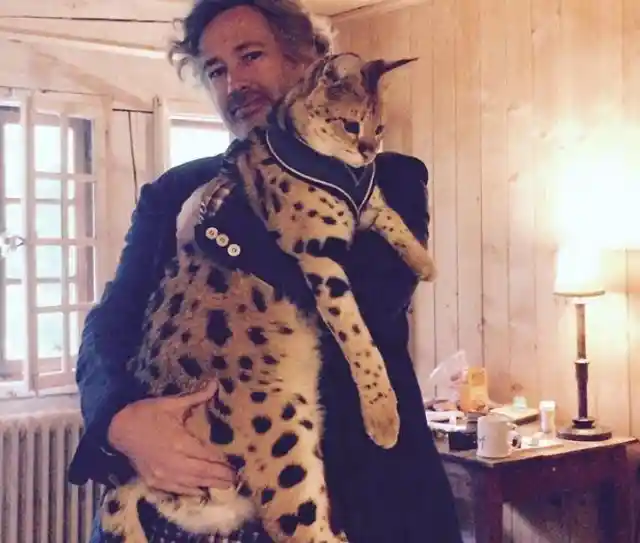
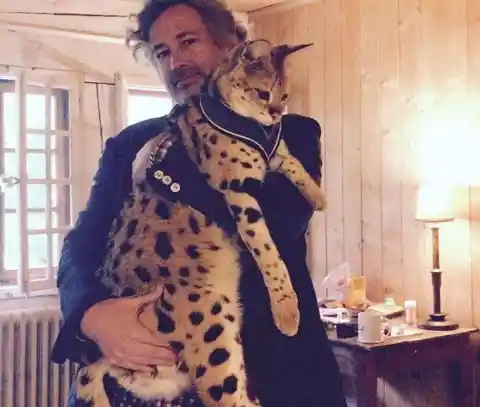
Savannah cats were accepted and registered as a breed by The International Cat Association (TICA) in 2001, although the first hybrid was born in 1986. The Savannah may appear in different colors and patterns, however, TICA breed standards only accept spotted patterns with certain colors and color combinations, the reason being that it is the only pattern found on the African Serval Cat.
#12. Cama
What is a cama? It is the mix of a camel and a female llama. Both the name and the crossbreed are lovely. When comparing camas with their parents, you can see that they are smaller and fluffier than camels. The reason behind this crossbreed was to create an animal that generated more wool than a llama, but with a gentler temper, with the size and strength of a camel.
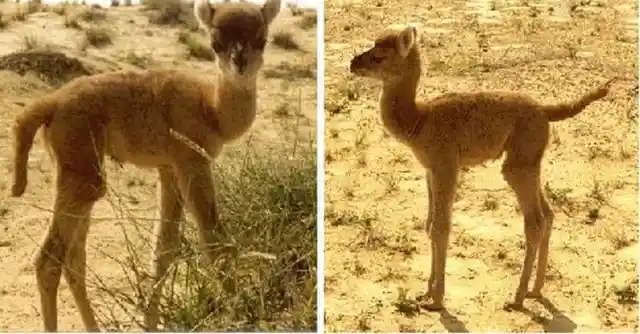
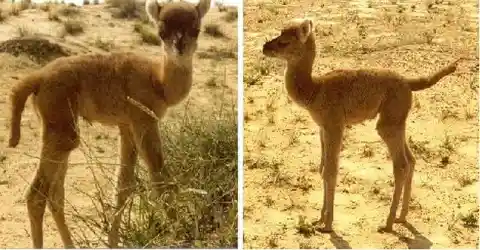
Just like camels, camas are herbivores that eat shrubs and other plants. Likewise, they can drink large amounts of water at a time and they can survive with little or no water for long periods. As this is a new breed, it can be tracked down to 1998, its lifespan is still unknown. But if camas are like their parents, their lifespan could range from 20-30 years to 40-50 years. Wouldn’t this be amazing?
You won’t believe our next animal hybrid!
#11. Leopon
When a lioness mates with a male leopard, the majestic offspring is called a leopon. While the leopon’s head is similar to that of a lion, the rest of its body resembles that of a leopard. They are characterized for having brown, rather than black, spots and tufted tails. Their climbing is similar to leopards and they seem to enjoy water as well. Regarding their size, leopons tend to be bigger than leopards.
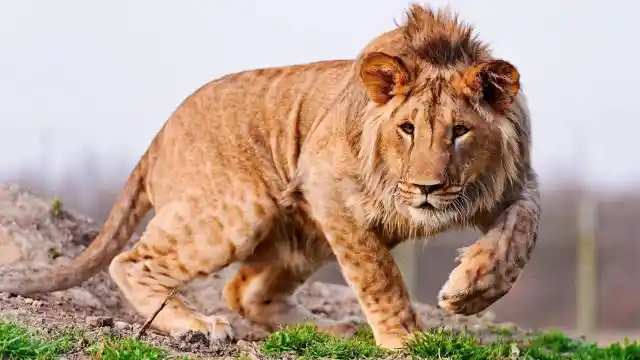
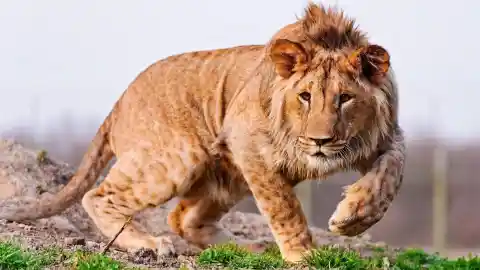
These hybrids are crossbred in captivity and are unlikely to occur in the wild. The first known leopon was raised at Kolhapur, India, in 1910, and its skin was sent to Reginald Innes Pocock by Walter Samuel Millard, the Secretary of the Bombay Natural History Society. Pocock, one of the first mammalogists to use external features, such as feet and ears, in the classification of higher animals, described the Leopon in a 1912 letter to The Field.
#10. Hinny
The hinny is another equine hybrid, just like the zorse and the zonkey. A hinny is the result from mixing a male horse, a stallion, and a female donkey, a jenny. Don’t confuse them with mules, i.e. the offspring of a male donkey, a jack, and a female horse, a mare. Hinnies are slightly smaller than horses, and they have thicker fur coats, shorter ears and stronger legs than mules.
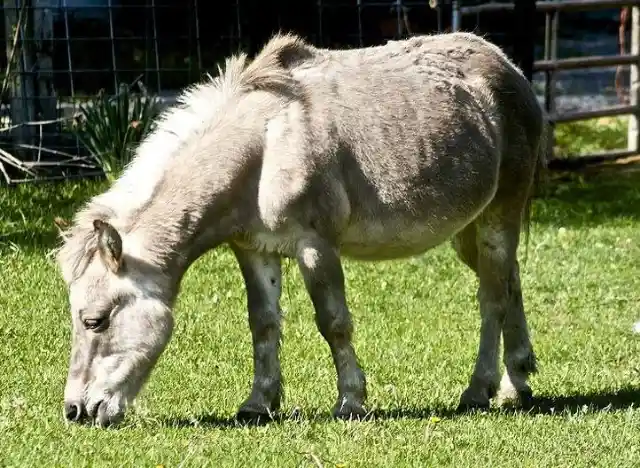
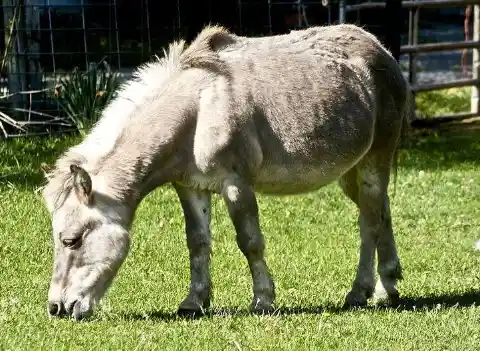
According to the American Donkey and Mule Society (ADMS), hinnies are difficult to breed due to the differences in the number of chromosomes of the horse and the donkey.
“The equine hybrid is easier to obtain when the lower chromosom<e count, the donkey, is in the male. Therefore breeding for hinnies is more hit-and-miss than breeding for mules.”
#9. Wolfdog
No need to wonder too much to know which two animals are crossed to create the wolfdog: you’re right, a wolf and a dog. This breed was first documented in 1766 in Great Britain, when a wolf mate with a dog identified at that time as a Pomeranian. Considered a scientific curiosity, wolfdogs were purchased by English noblemen. Wolfdogs were popular exhibits in British menageries and zoos.
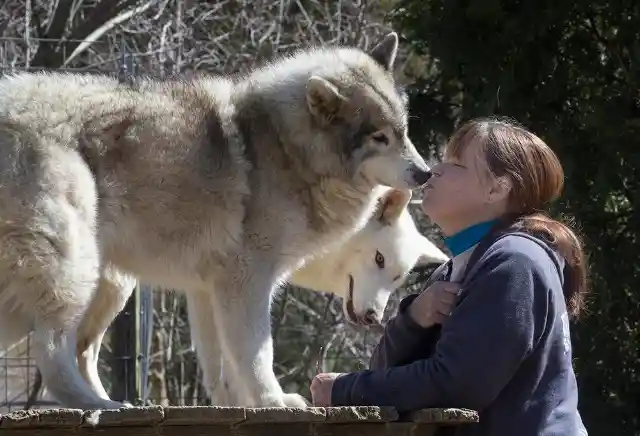
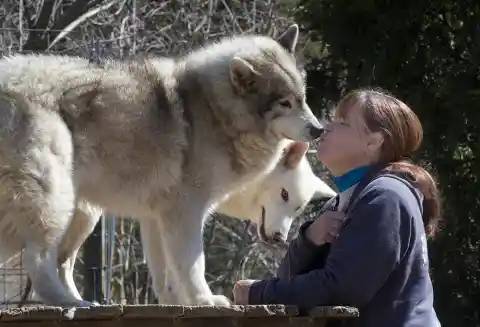
Due to their genetic mixture, it’s difficult to predict physical and behavioral characteristics. As a result, controversy has arisen regarding this animal. Some perceive the wolfdog as a dangerous creature while others think it should be categorized as protected native wildlife. While several countries forbid the ownership, breeding, and importation of wolfdogs, others regulate their ownership.
#8. Tigon
We’ve already told you about the tigon’s converse hybrid, the liger. In contrast, a tigon is the hybrid combination of a male tiger and a female lion. At first, they were thought to be sterile but, in 1943, a female tigon mated with a male lion at the Munich Hellabrunn Zoo. Their female cub was born with delicate health but, despite all odds, she was successfully raised to adulthood.
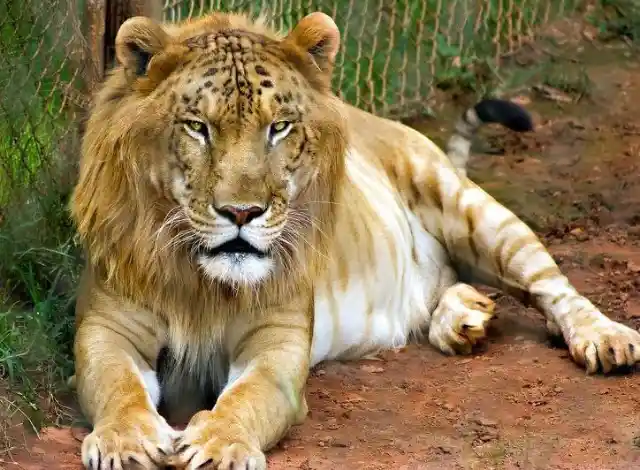
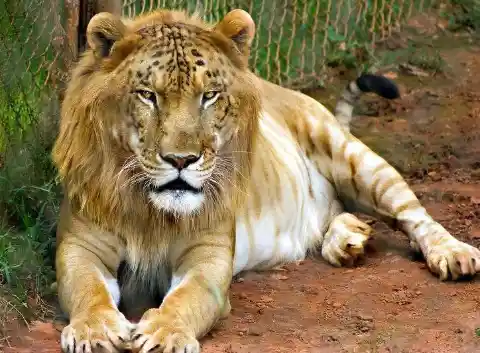
Tigons can have both spots from the mother and stripes from the father. Tigons can only be found in captivity because lions and tigers’ habitats don’t overlap (except in India’s Gir Forest, where so far no ligers have been found). Another important fact is that tigons are prone to cancer and other diseases like most crossbreeds. Likewise, studies have shown that they have a shorter life-span than a lion or a tiger.
Check out the next rare breed!
#7. Geep
A geep, also known as a shoat, is the rare hybrid offspring of a sheep and a goat. Although it’s true that sheep and goats share some similarities –they are both caprines, for instance – and can mate, their offspring is generally stillborn. Because they are unusual, farmers claiming they had geep have appeared in past years. When asked to take the animals to be genetically tested, these same farmers refused to take them alleging different reasons.
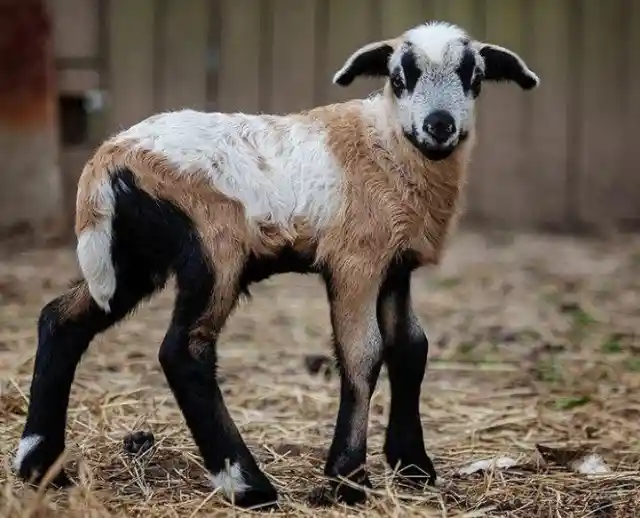
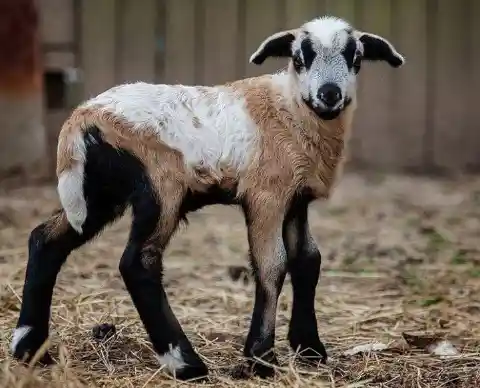
Gary Anderson, a professor emeritus at UC Davis, has stated that geep reports raise suspicion, and without genetic testing, he prefers to remain skeptical.
“(…) when it came time to actually go do a test, something would get in the way, like the farmer was too busy or their hybrid died the night before and they were too heartbroken to take [genetic]samples.”
#6. Jaglion
Another feline on our list! The mystical-eyed jaglion or jaguon is the hybrid of a male jaguar and a lioness. In contrast, a liguar is an offspring of a male lion and a female jaguar. This big feline is known for having the lion’s background color, brown, jaguar-like rosettes and the potent body of the jaguar. This mesmerizing beast can only be found in captivity.
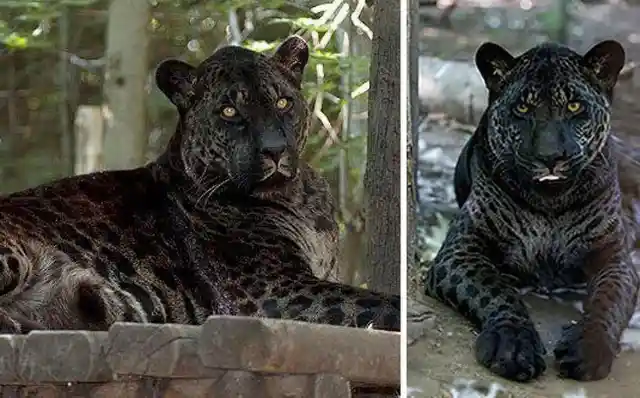
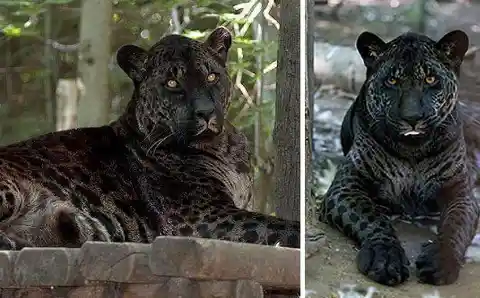
Jaglions were crossed unintentionally in 2006, when the black jaguar Diablo and the lioness Lola mated at Bear Creek Wildlife Sanctuary in Canada.
“Lola and Diablo have always been together. They came to Bear Creek within weeks of one another, were bottle-fed in the same nursery and became constant companions. It seemed only logical to house them together as they grew up.”
#5. Zebroid
This is a fantastic breed! A zebroid results from crossbreeding a zebra and any other equine. The zebroid has the body of a horse but the coat of a zebra. Usually, the stripes don’t cover the whole body and they might be limited to the legs or spread onto parts of the body or neck. If the horse parent is patterned, this pattern might be passed down to the offspring.
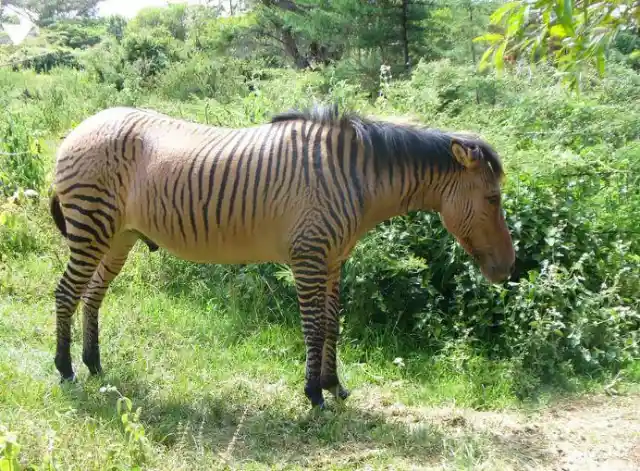
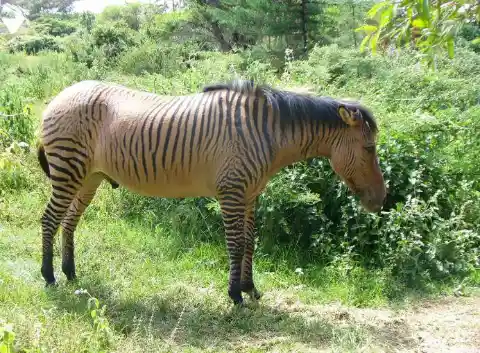
Although zebroids tend to be sterile, they have been bred for over 200 years. In fact, Charles Darwin noted several zebra hybrids in his works. One of their advantages is that they are more resistant to certain diseases, such as sleeping sickness than horses or donkeys. Nowadays, many zebroids are bred as riding animals as well as major attractions in circuses and smaller zoos.
Two more to get to one of our favorites!
#4. Zubron
This robust animal is a hybrid of domestic cattle and the European bison or wisent. As a result, it’s the equivalent to the beefalo. Leopold Walicki bred the first hybrid in 1847. But after World War I, scientists considered the possibility of replacing domestic cattle with the zubron and experiments began. The result was an animal more durable and less susceptible to disease.
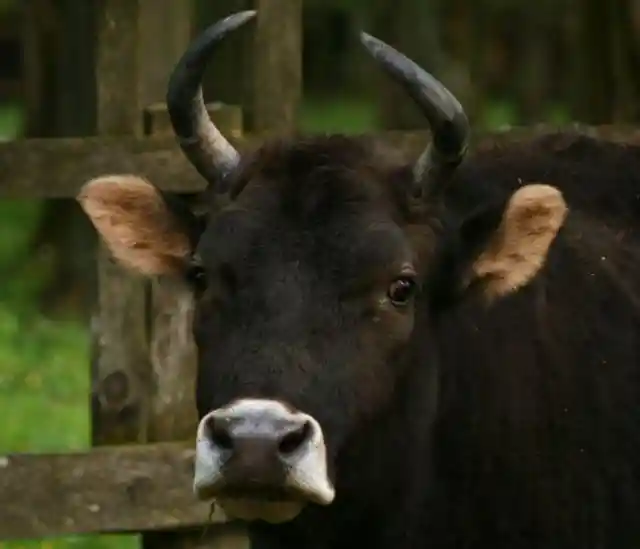
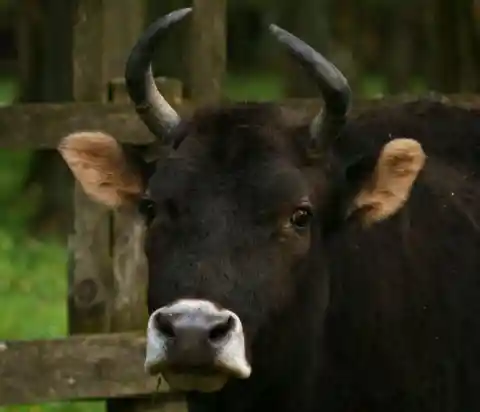
The idea behind these experiments was to turn zubrons into a hardy and cheap alternative to cattle. Experiments with the zubron came to an end in the late ‘80s when the results of the breeding program were considered unsatisfactory. Today it seems that the breeding and experiments are continuing in Karolew in Greater Poland. If you visit Poland, maybe you can take a detour to visit these incredible animals!
#3. Narluga
When narwhals mate beluga whales, a narluga is born. Even though narlugas are extremely rare, sightings of this specimen have increased in the North Atlantic Ocean. When spotted, the reports stated that the long nose of the narwhal was missing, and the head shape was more similar to a beluga whale. Additionally, its teeth presented some similarities with both narwhals and belugas.
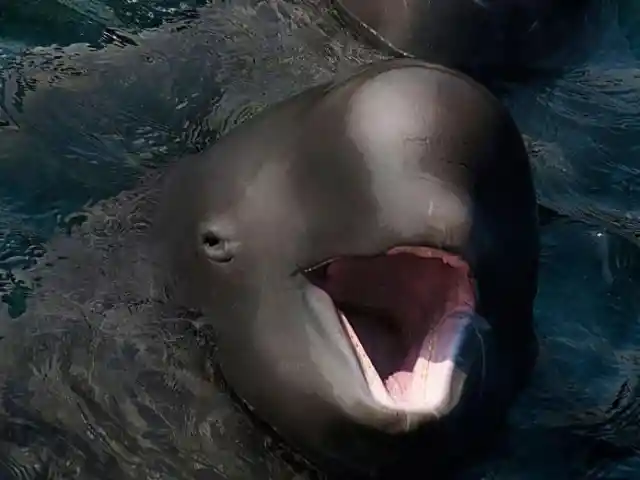
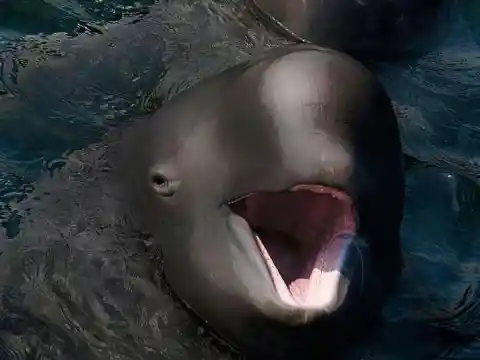
Another characteristic is the lack of a tusk, which is a liability because the tusk is an indicator of the narwhal’s breeding prowess. The narluga is one of 34 possible and actual climate-change-induced hybridizations, in accordance with a 2010 study published in the journal Nature.
“As more isolated populations and species come into contact, they will mate, hybrids will form and rare species are likely to go extinct,” authors of the Nature study wrote. “As the genomes of species become mixed, adaptive gene combinations will be lost.”
Up next is one of our favorites!
#2. Coywolf
This hybrid results from commingling coyotes, eastern wolves and gray wolves. Because all these canids are genetically closely related, they can crossbreed. Coywolves, also termed woyote, tend to be bigger than coyotes but smaller than wolves. They take after their coyote ancestors and can quite comfortably live with humans in urban environments, in contrast with wolves, who live exclusively in the wild.
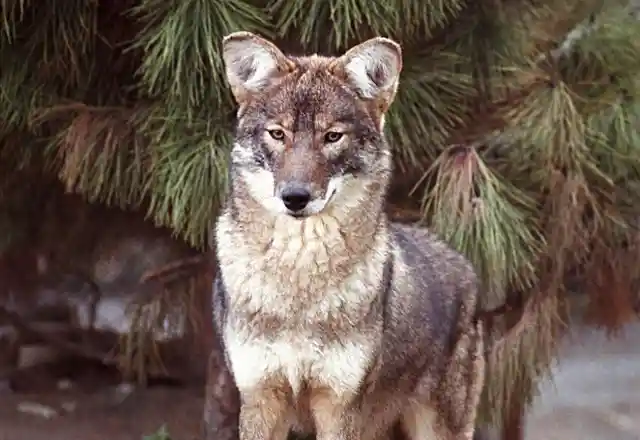
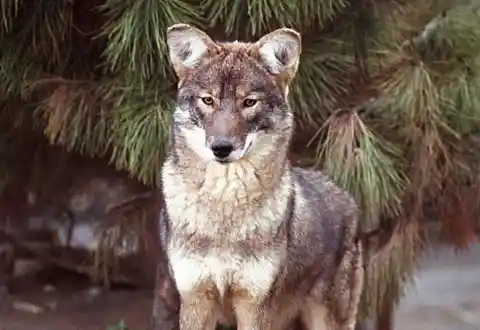
Although these creatures prefer agricultural and suburban areas, they have been spotted wandering the streets of Washington, Boston, and New York City, where they use abandoned subway lines to travel freely. These animals feed on small mammals, like rabbits and rats, and they are proliferating fast because almost all their natural competitors, like cougars and bobcats, are gone.
#1. Mulard
This is the only bird in our list! Mulards or moulards are a mix between two types of domestic duck: the mallard duck and the muscovy duck. Just like many of the specimens we’ve seen in this list, this breed is sterile. This is why they have earned the nickname mule ducks. Artificial insemination is often used to breed this animal as it’s been proven to be more successful than natural breed cross.
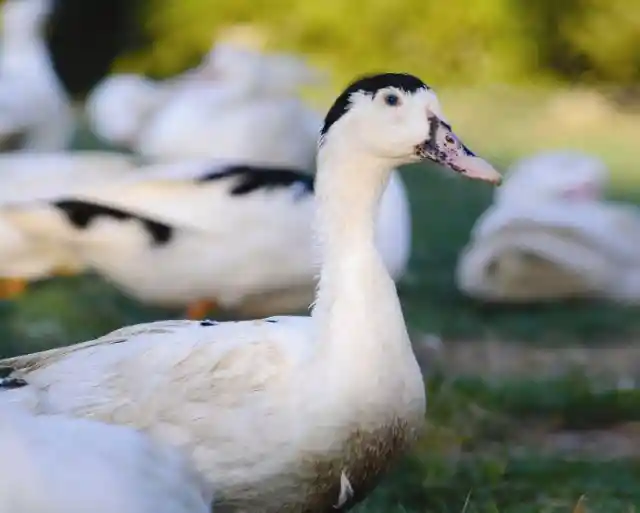
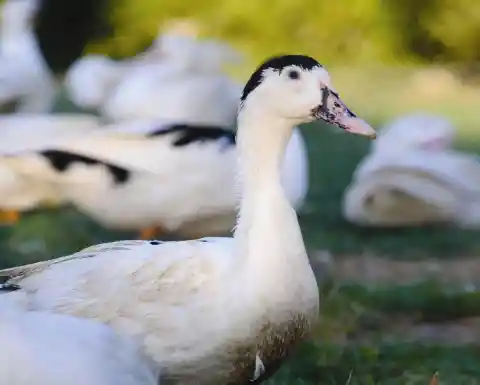
Mulards are commercially bred on farms for meat and foie gras. As geese are more expensive to maintain than ducks because of their aggressive behavior and bigger size, farmers have turned to the production of mulards. As a result, the use of geese to produce foie gras has been outnumbered by the use of mulards. Apart from being raised in Europe and the United States, mulards are also found all through Southeast Asia.